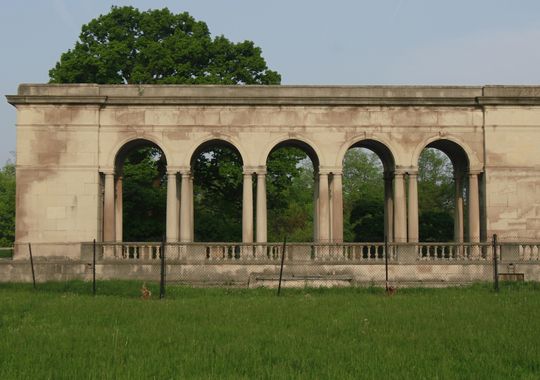(Indy Star, by William Higgins) The 20th annual Indy Irish Fest, Sept 18-20, involves music and dancing and other Irish-type activities such as a foot race where you have to wear a kilt.
If at the festival’s conclusion you find yourself hungry for more Irish-type stuff, then sate yourself by checking out these six places:
West Washington Street, address unknown — Indianapolis’ Irish, who were mostly Catholic, celebrated their first Mass in the city at a bar here in 1837, according to the Encyclopedia of Indianapolis. Four years later they built their first church, St. John Catholic Church, which is still standing at 126 W. Georgia St.

Golden Ace Inn, 2533 E. Washington St. — “Irish pubs” are as commonplace today as wings, practically strip mall staples. But this here is an actual Irish pub, probably the city’s oldest, going back to 1934. The founder of the Golden Ace was John McGinley, and McGinley’s descendants still run the place. Photos of John F. Kennedy are on the wall, alongside photos of Notre Dame football, one from as far back as 1913. The menu includes braunschweiger.
Irish Hill is the name of the Near Southeast side neighborhood adjacent (to the north) to Fountain Square. It was settled in the mid-19th century by Irish immigrants. They were not fancy people. They worked long hours for not much money. For fun they ice skated on Pogue’s Run creek, according to Cathleen F. Donnelly’s report in the Encyclopedia of Indianapolis, and on Thursday nights they’d have a thing called a “breakdown,” wherein “revelers played and danced traditional jigs.”
St. Patrick’s Catholic Church, 950 Prospect St., founded in 1865, serviced the spiritual needs of residents of Irish Hill for most of a century. Now its pews are filled with Spanish speakers, which is actually totally symmetric because Latinos are in effect today’s Irish — often hard-working, sometimes scorned newcomers. On Sunday St. Pat’s has four Masses, three in Spanish, one in English. In the front of the church, next to the statue of St. Patrick, is a painting of Our Lady of Guadalupe.
Some mean slurs used out loud against Irish people circa 1875 in the press, in a newspaper called the Indiana Journal: “Irish tramps”; “Hibernian heifers”; “Romanish herds.”
Thomas Taggart, who lived at 1331 N. Delaware St. (brick, east side of street, still standing), was the first Irish-born person in Indianapolis to rise to the level of big hitter (though he was Protestant, not Catholic, which made a difference). He was mayor from 1895-1901 and later chairman of the Democratic National Committee. Along the way he got rich, acquiring a share of the French Lick Springs Hotel, among other assets. Taggart did all that without graduating high school.

In Riverside Park, 2420 E. Riverside Drive, was erected in 1931 a giant, limestone tribute to the newly deceased Taggart, who as mayor had overseen the creation of the city parks system. It’s bigger than most peoples’ houses and fancier, with majestic columns and other flourishes. It’s in an advanced state of decay, though. It needs about $1.5 million worth of rehabbing. You can help Indiana Landmarks try to save it.
Contact Star reporter Will Higgins at (317) 444-6043. Follow him on Twitter @WillRHiggins.